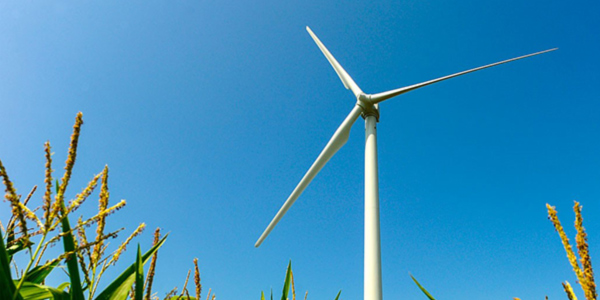FERC on Monday placed an Iowa wind farm’s method for calculating reactive power rates into question, although it declined to initiate a blanket probe into similar NextEra Energy rate filings.
The commission said NextEra Energy Resources’ Crystal Lake II wind farm in north-central Iowa may be improperly including operations and maintenance costs and transmission-related expenses in its reactive power rate schedule. It set the facility’s rates for hearing and settlement proceedings (ER20-2543).
Crystal Lake II said it now requires slightly more than $1 million per year in reactive power revenue. The facility is designed to provide reactive power, and its turbines have been churning since 2012.
Nearby Interstate Power and Light (IPL), an Alliant subsidiary, raised objections to Crystal Lake II’s rate schedule, arguing that it is unacceptable for asynchronous generators to use the reactive power rate methodology FERC established in 1999 for synchronous generators. IPL said the filing was “one of a series of filings by subsidiaries of NextEra to establish charges for reactive service.” The utility asked the commission to consolidate and investigate all similar filings by NextEra subsidiaries.
FERC said a preliminary analysis of Crystal Lake II’s proposed rates showed they could be unjust and unreasonable. The commission said a consolidation of other NextEra filings was beyond the scope of the proceeding but said that IPL “may raise its concerns regarding how the proposed revenue requirement has been calculated in the hearing and settlement judge procedures.”
For its reactive power charges, Crystal Lake II included the costs of low-voltage collection system feeders and low-voltage transformers, which aggregate the output of individual wind turbines. The collection system costs include some substation costs.
IPL argued that collection system costs aren’t necessary for synchronous generators’ production of reactive power and therefore aren’t contemplated by FERC’s 1999 methodology. The utility also said the equipment costs can’t be completely dedicated to reactive power production.
“The allocation of accessory electric equipment costs to the production of reactive power has not been shown to be just and reasonable and appears excessive,” IPL said.
The company also charged that Crystal Lake II was expecting to be compensated for transmission-related system losses, though FERC’s methodology only allows traditional generation’s heating losses to be recovered. “Wind-powered generators do not experience significant heat-related losses in the production of reactive power,” it said.
The utility said FERC should “consider balancing the requirement to provide reactive power with the need for reactive power in a particular locale or region.” It said that FERC “should not simply assume that, because a generator is able and willing to provide reactive power, that this reactive power is needed for reliable and efficient operation of the electric system.”


